
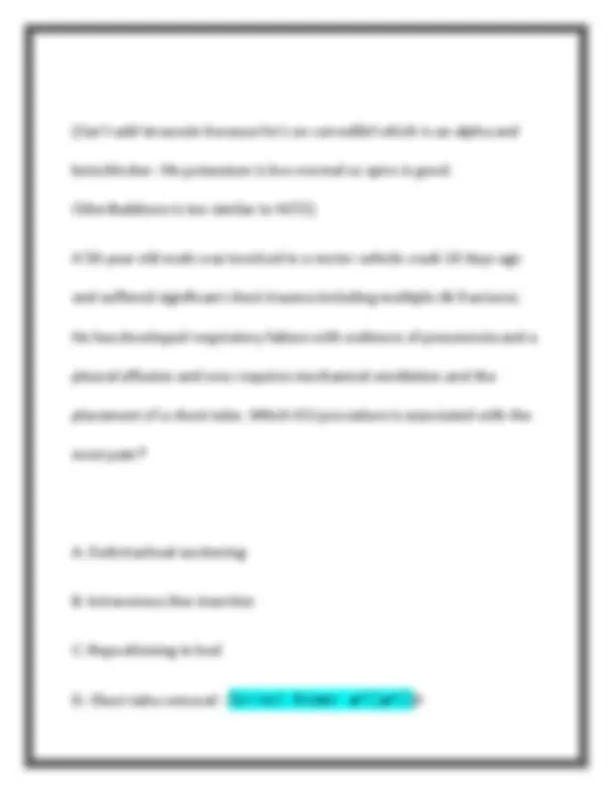
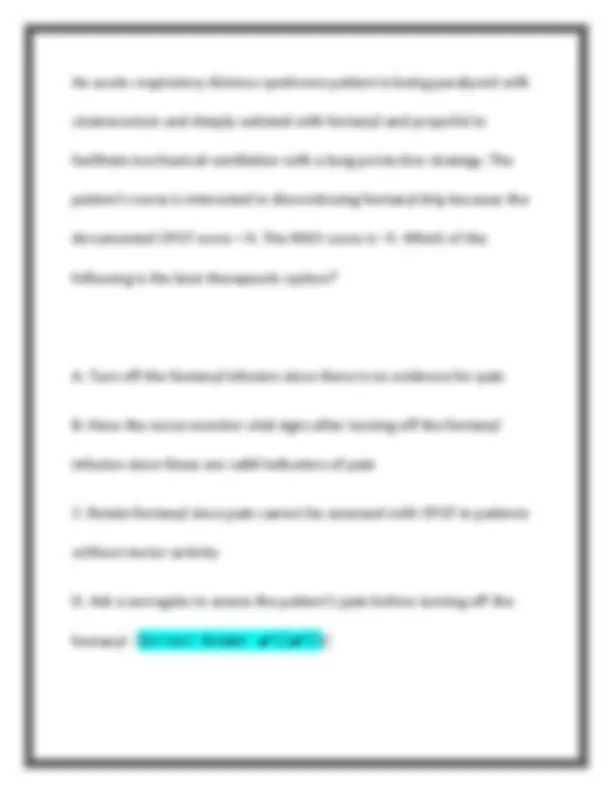
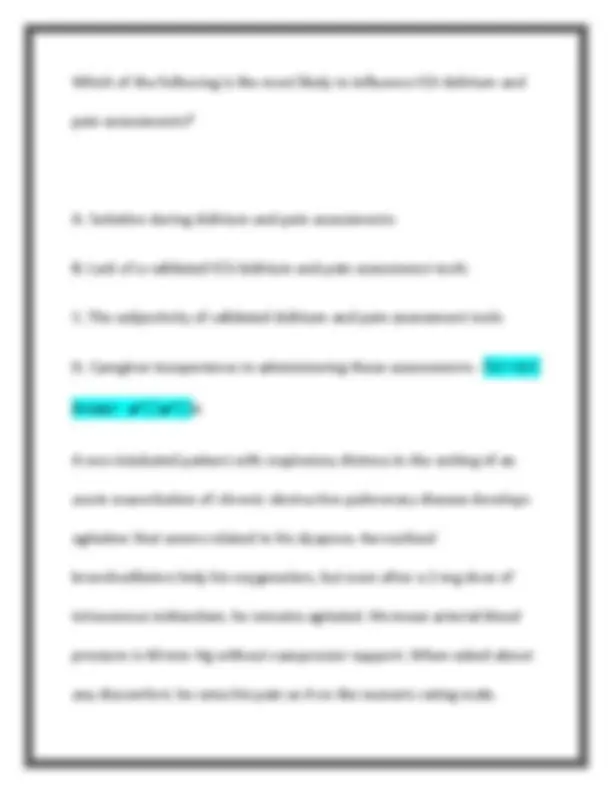
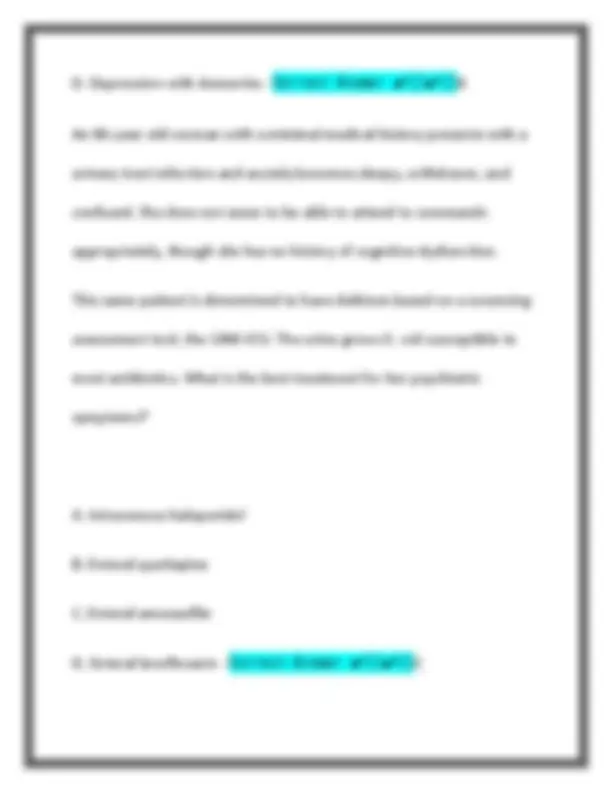
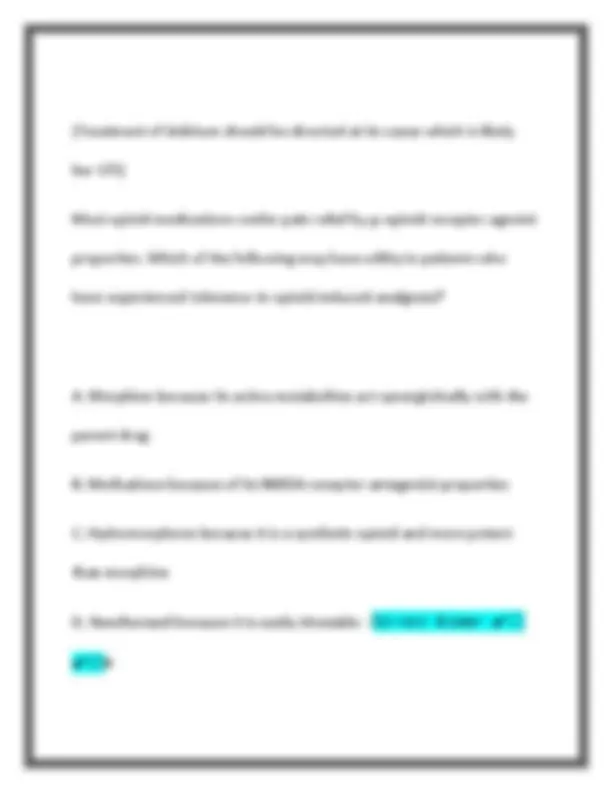
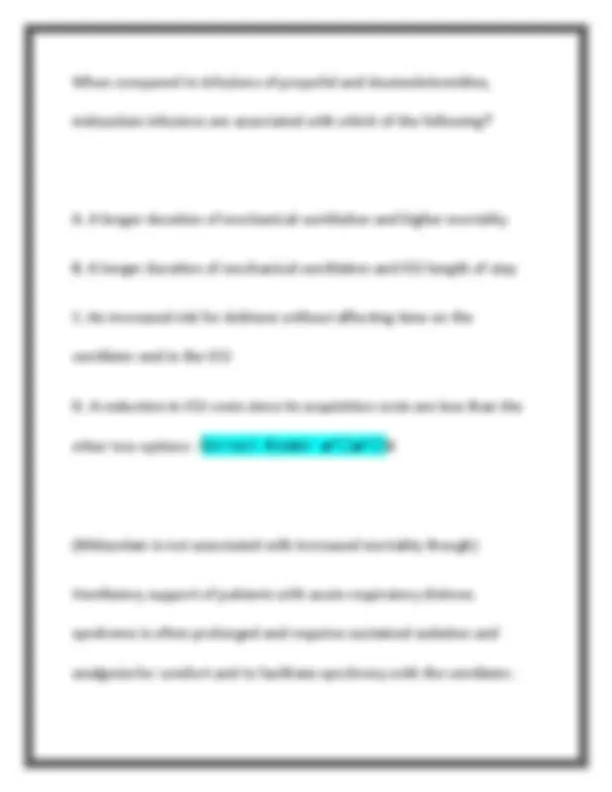
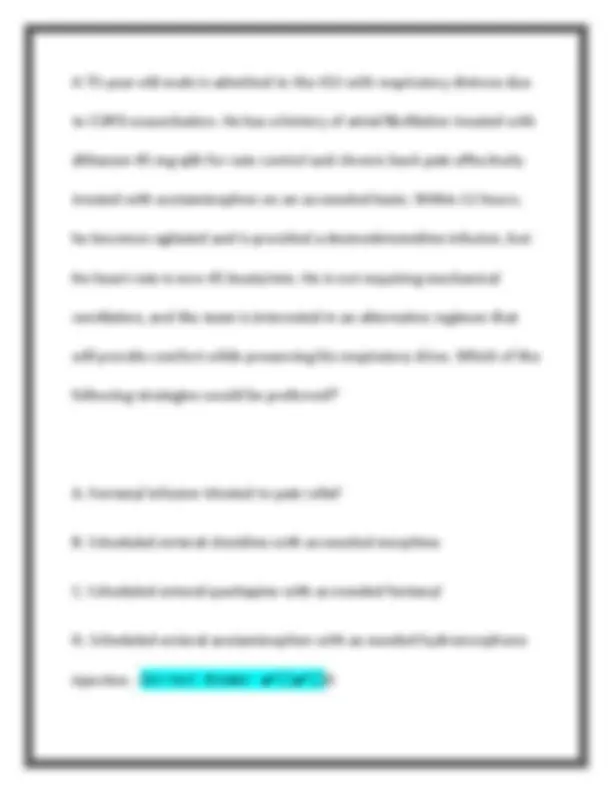
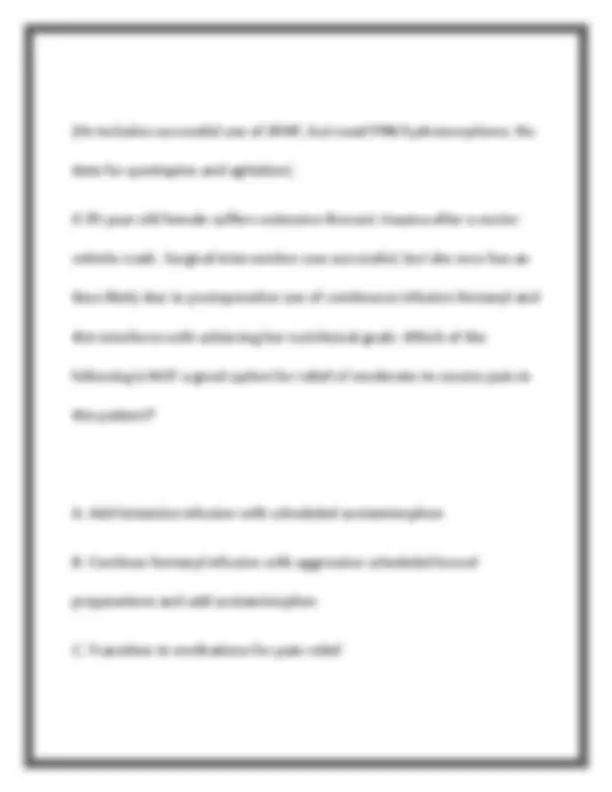
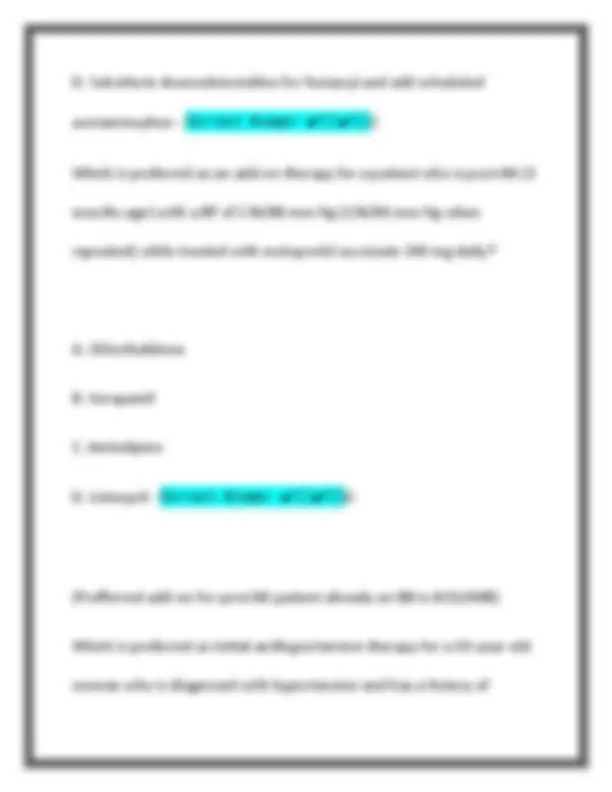
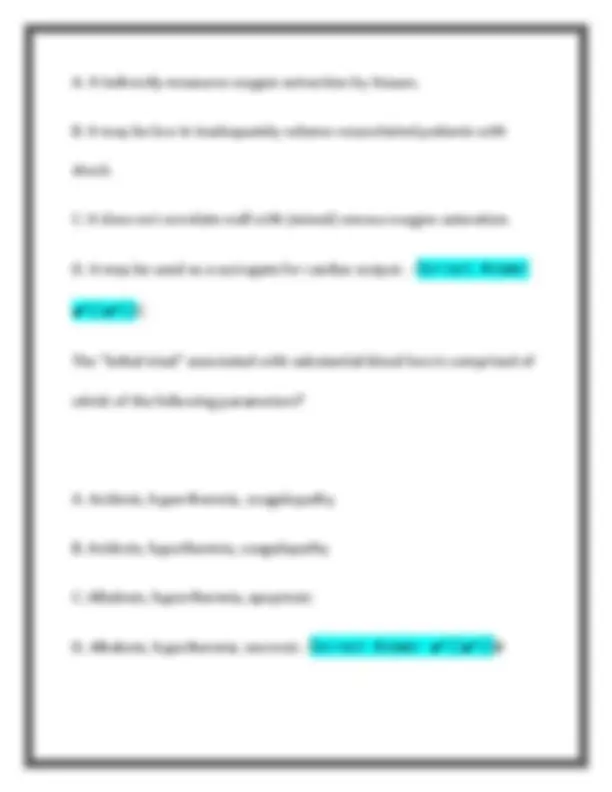
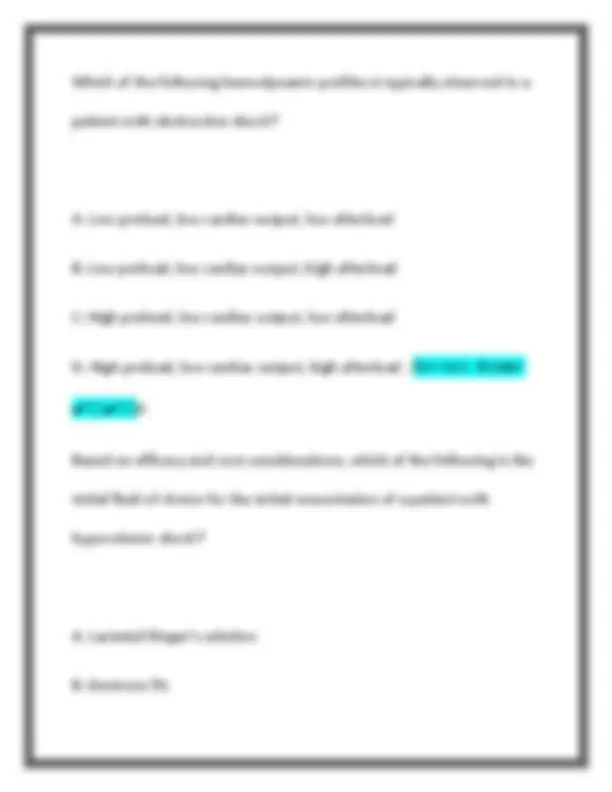
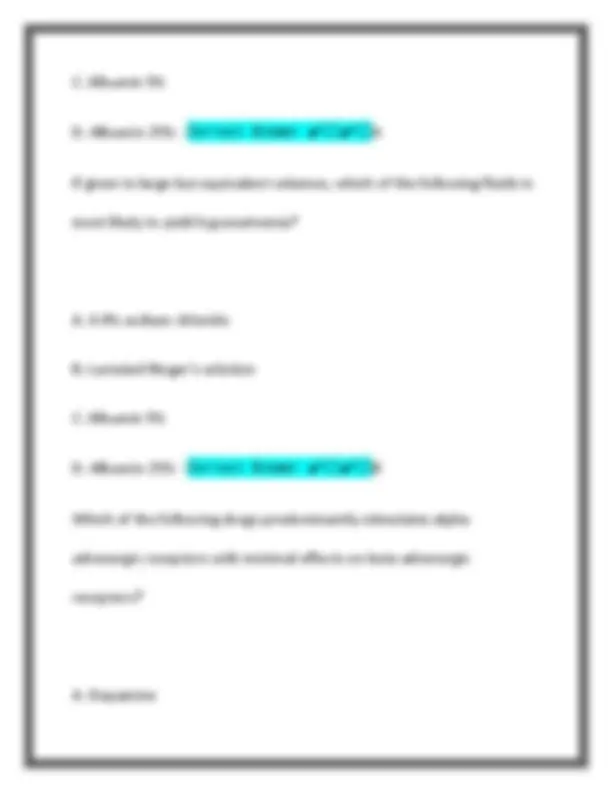
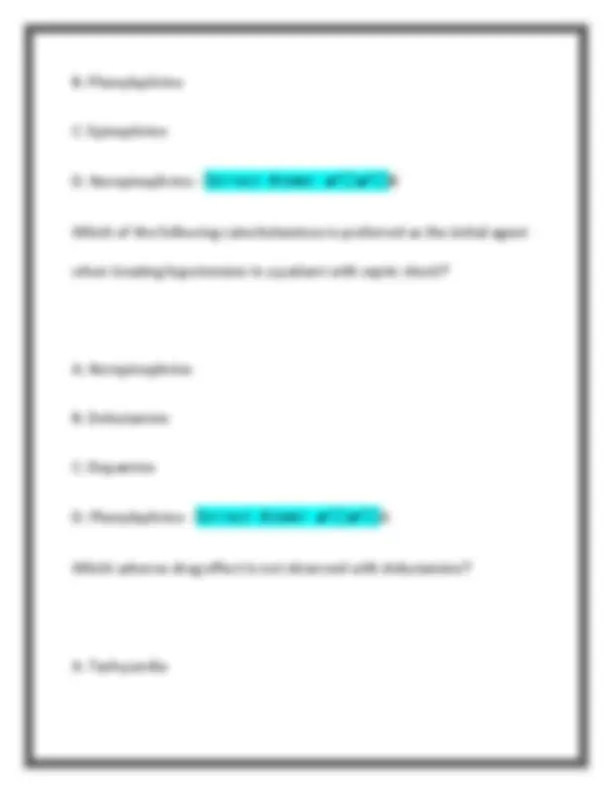
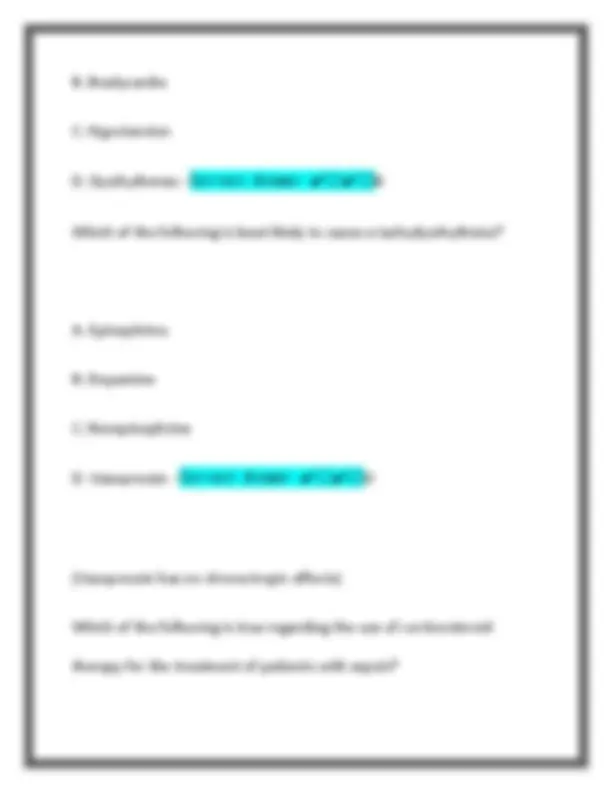
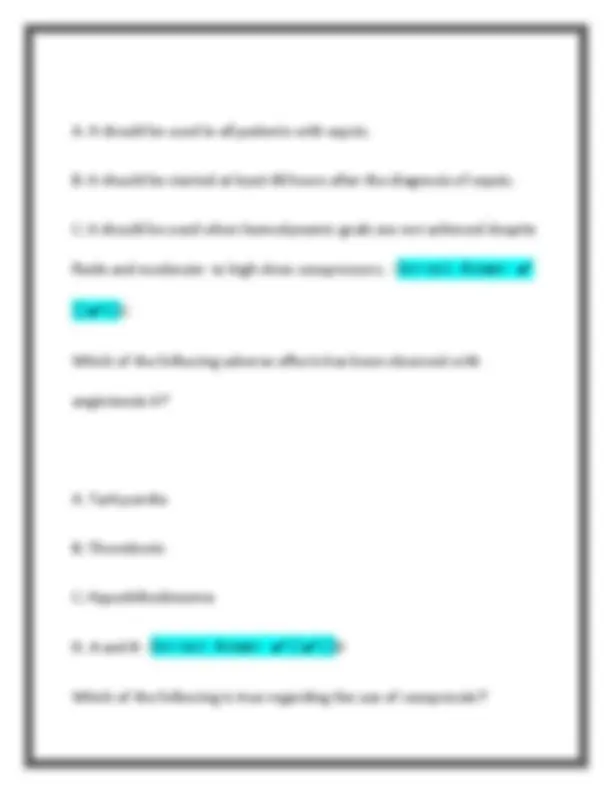
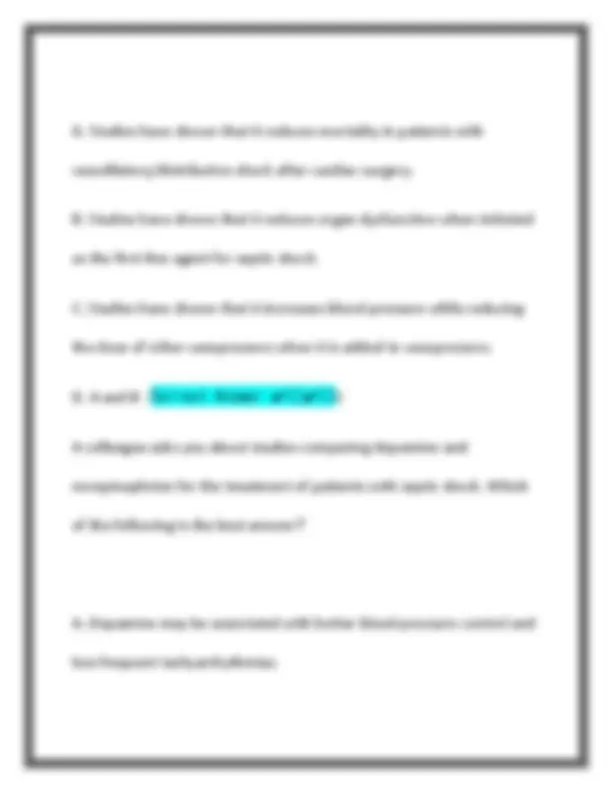
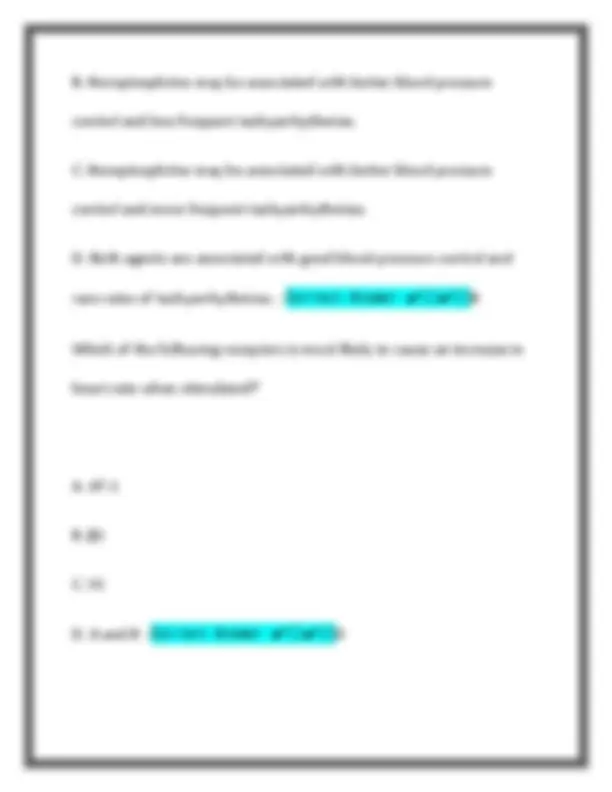

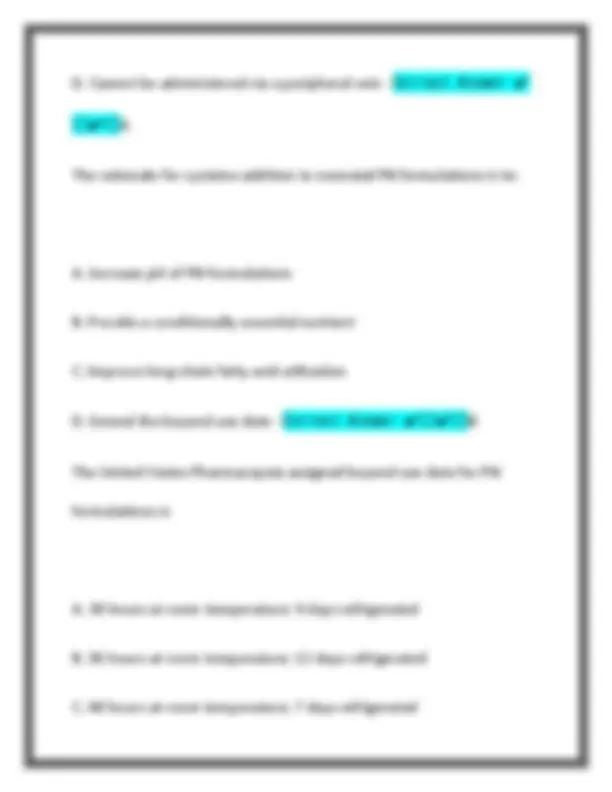
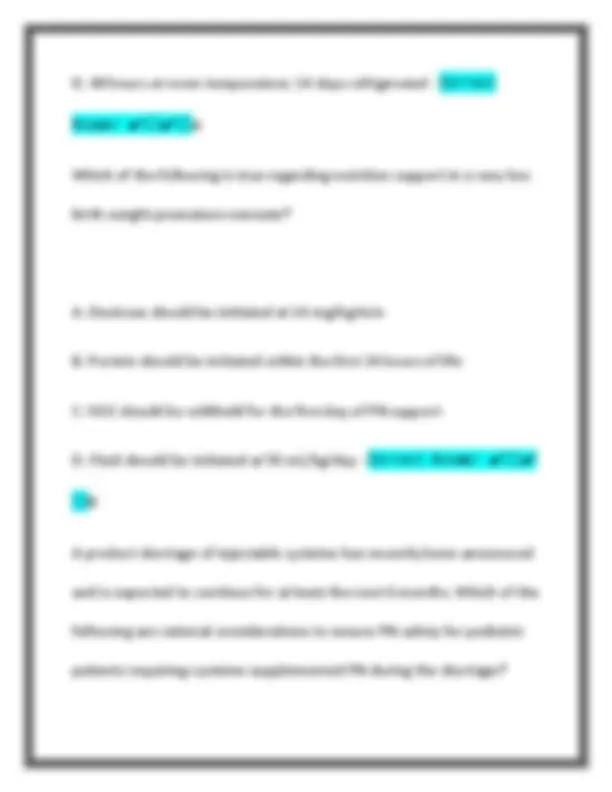
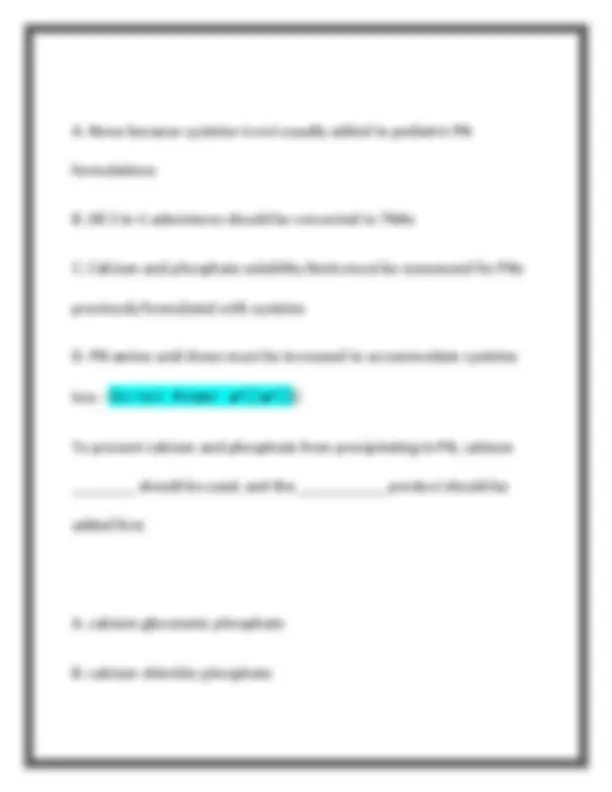
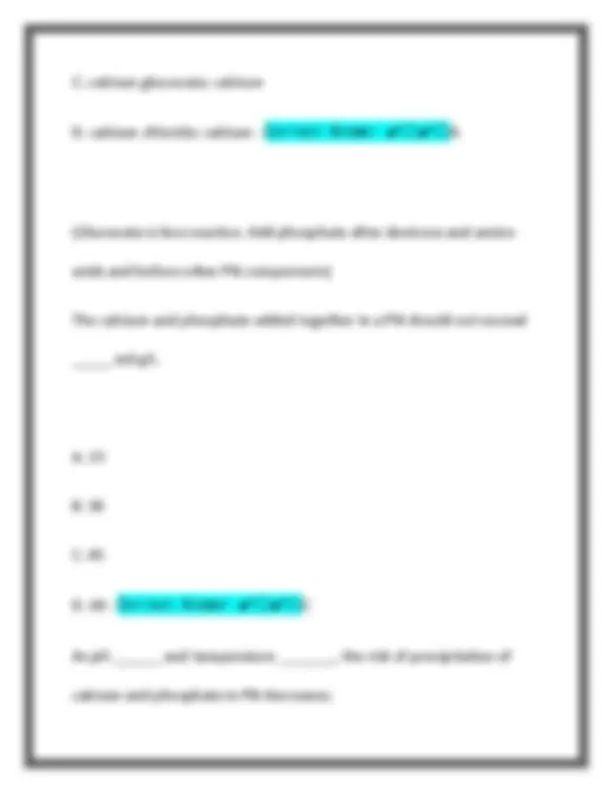
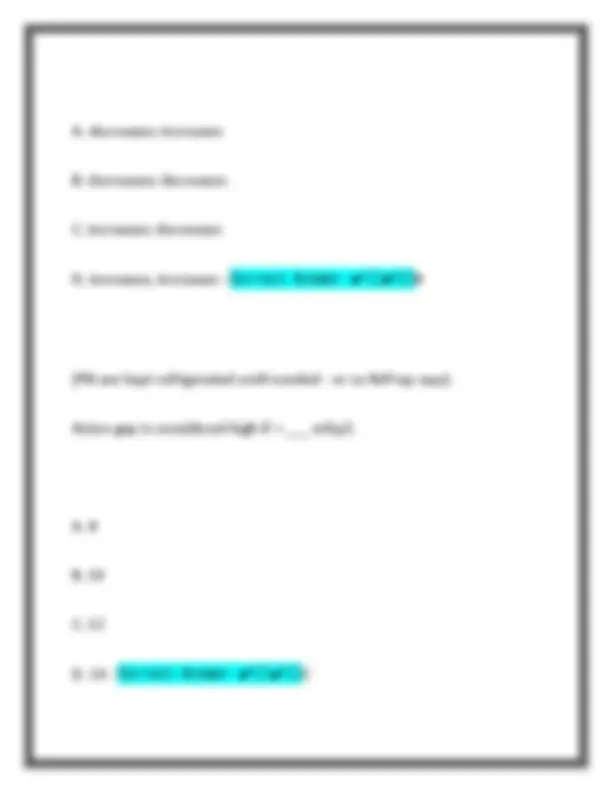
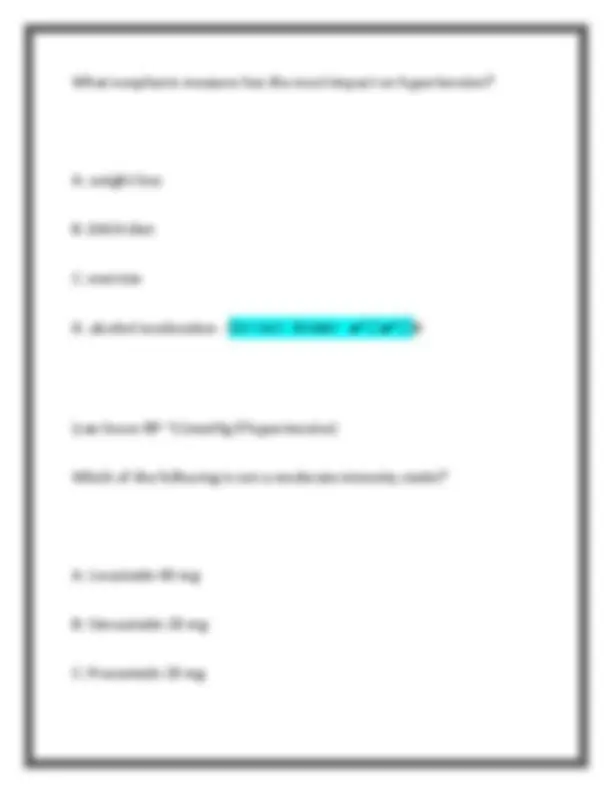
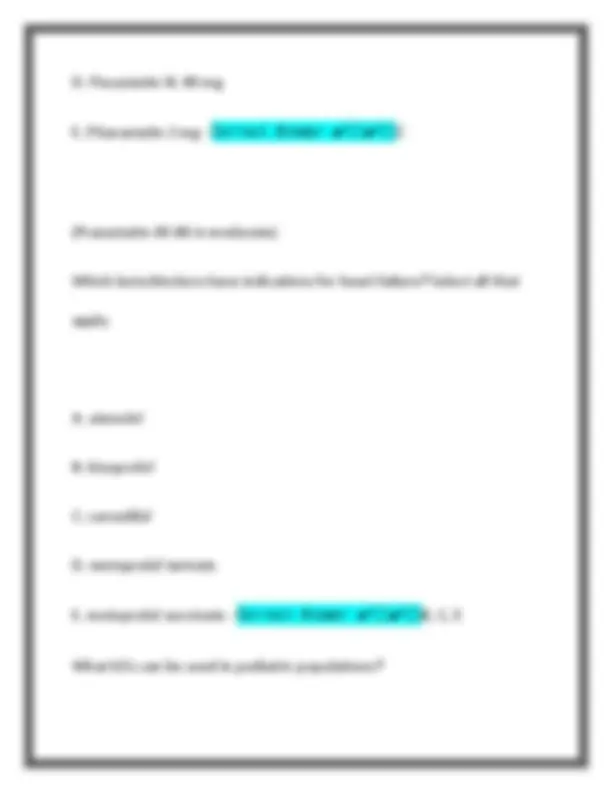
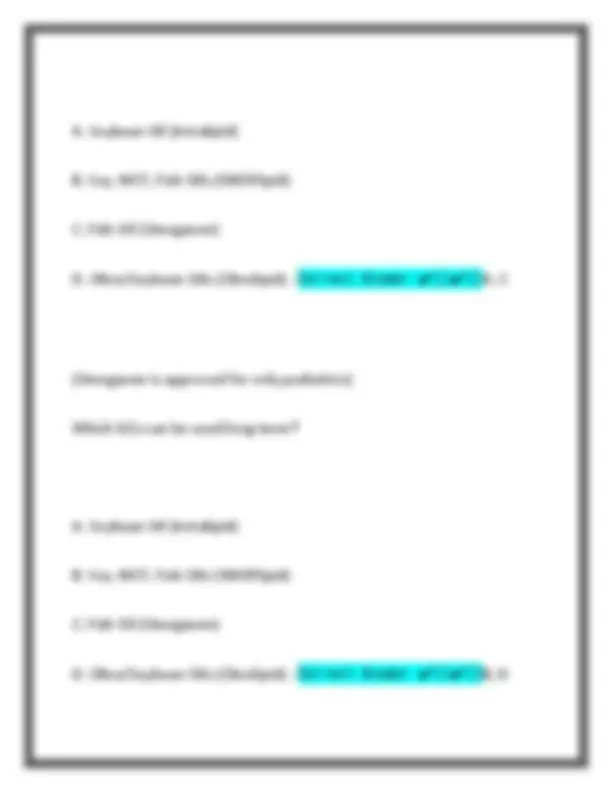
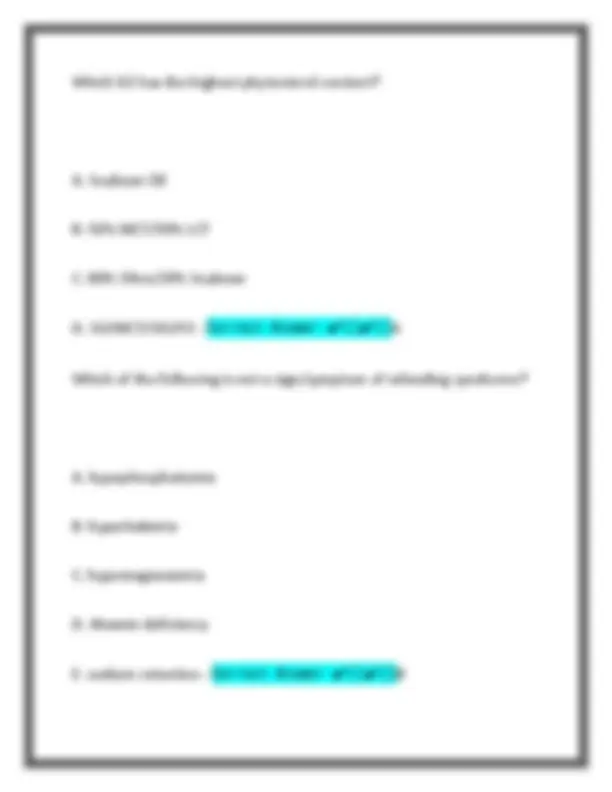

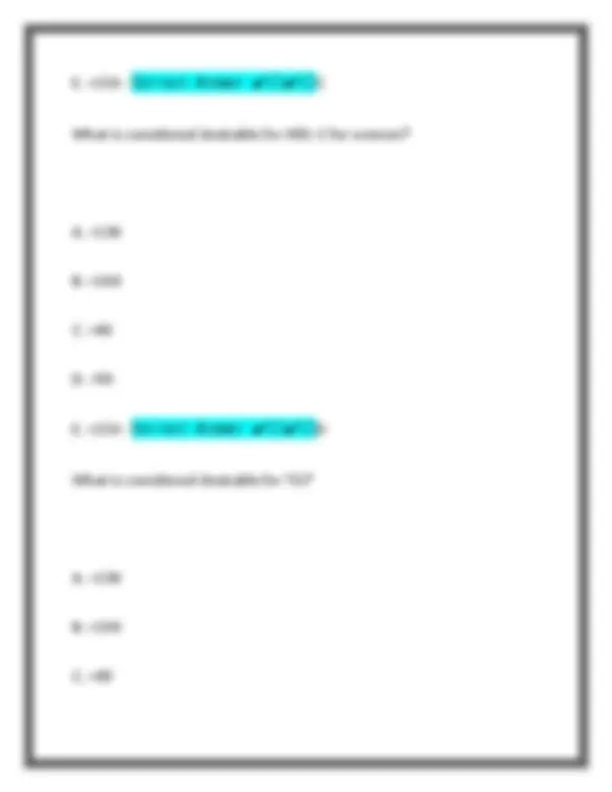
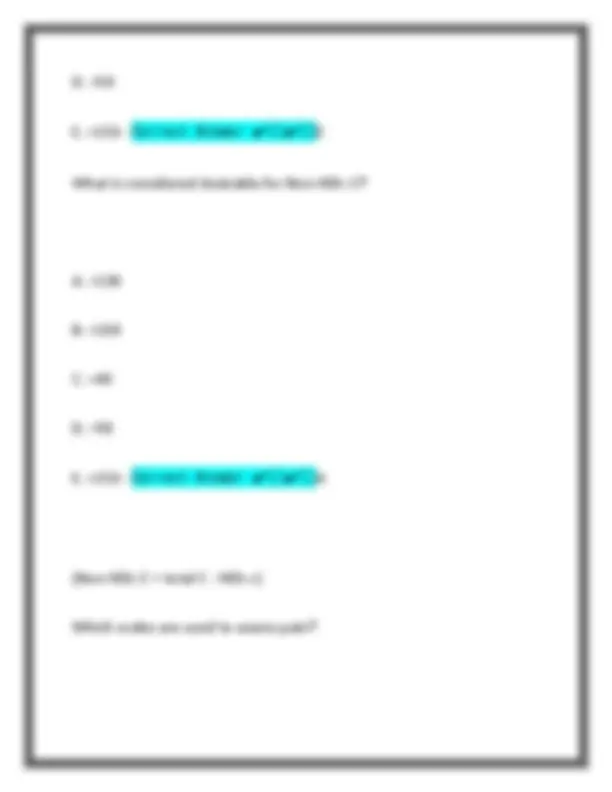
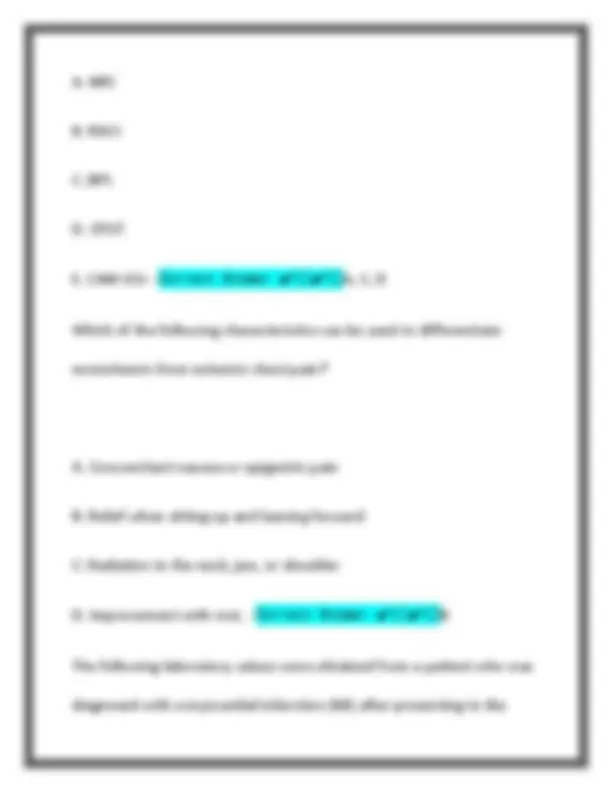
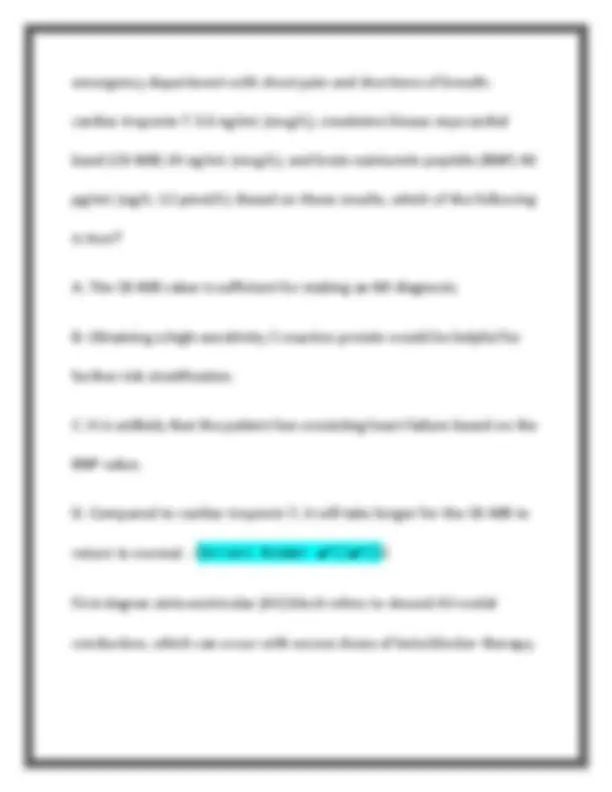
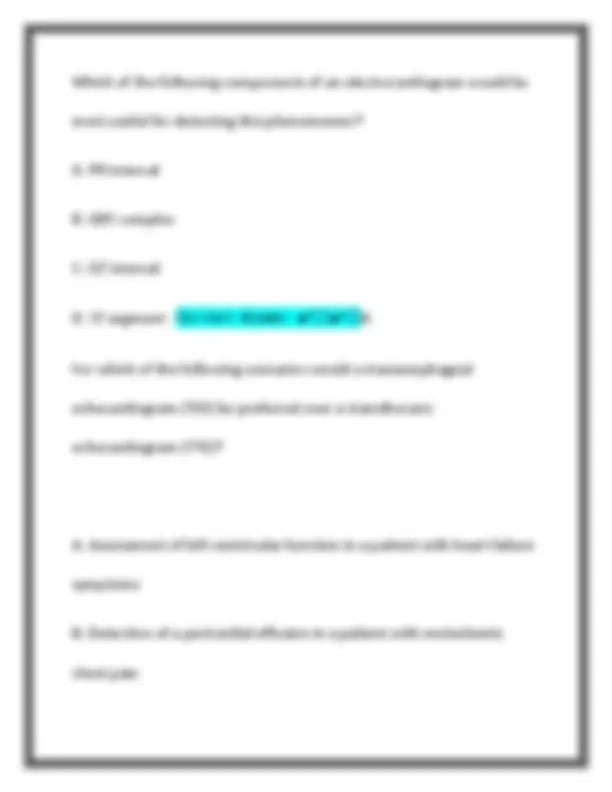
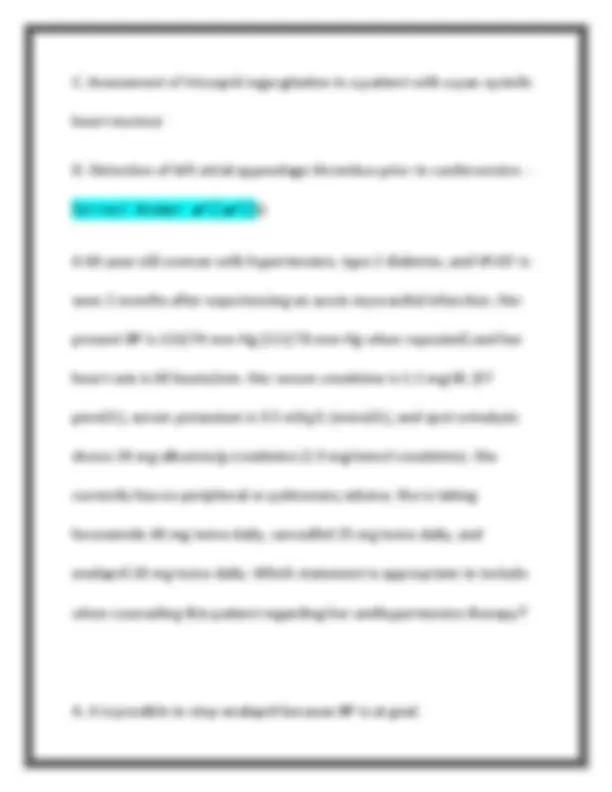
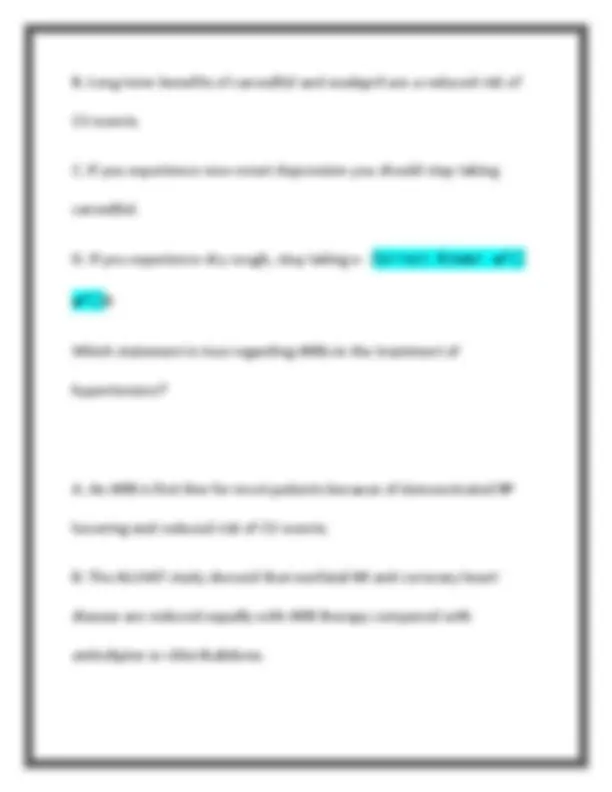
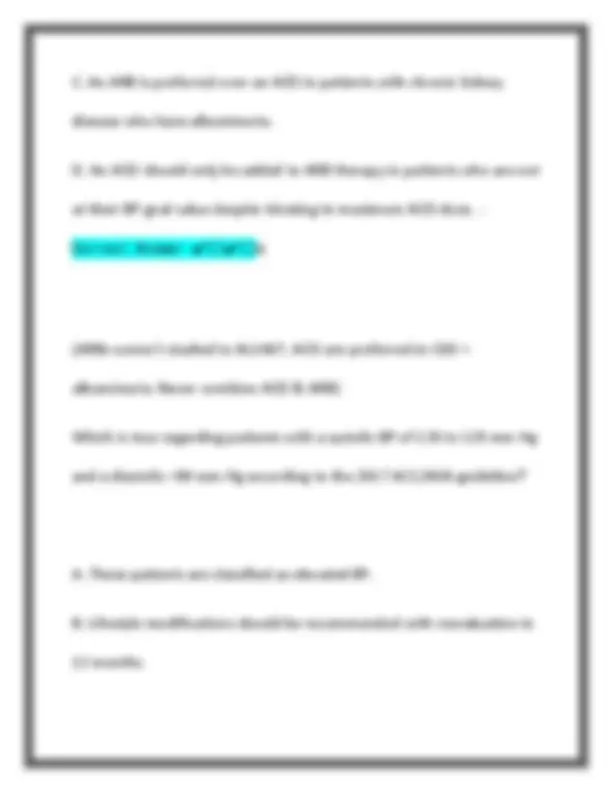

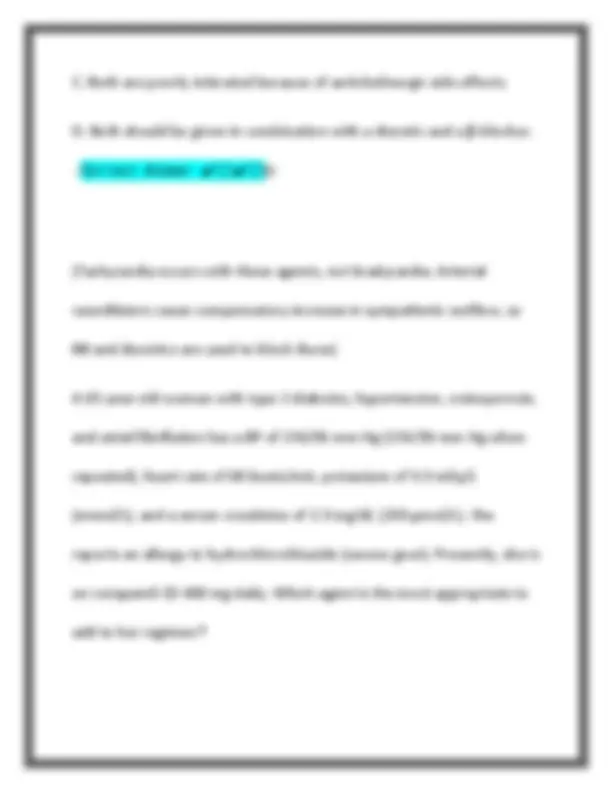
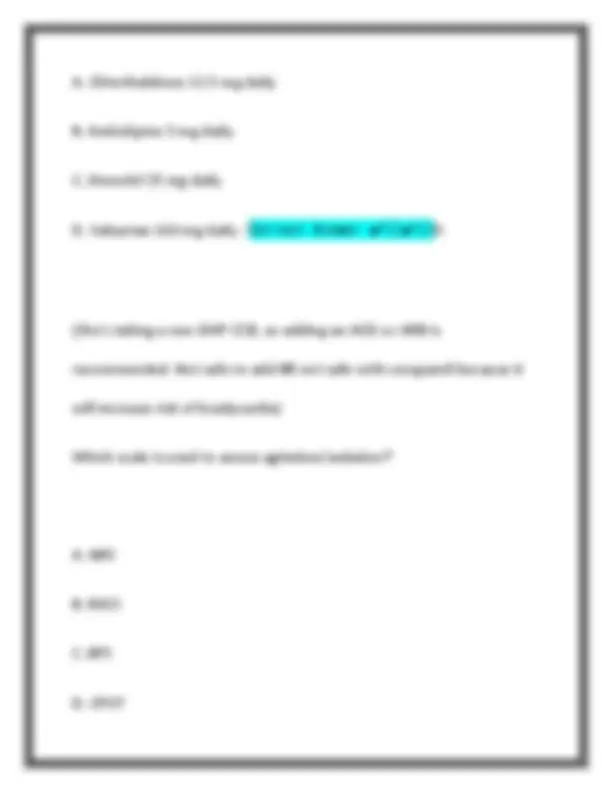
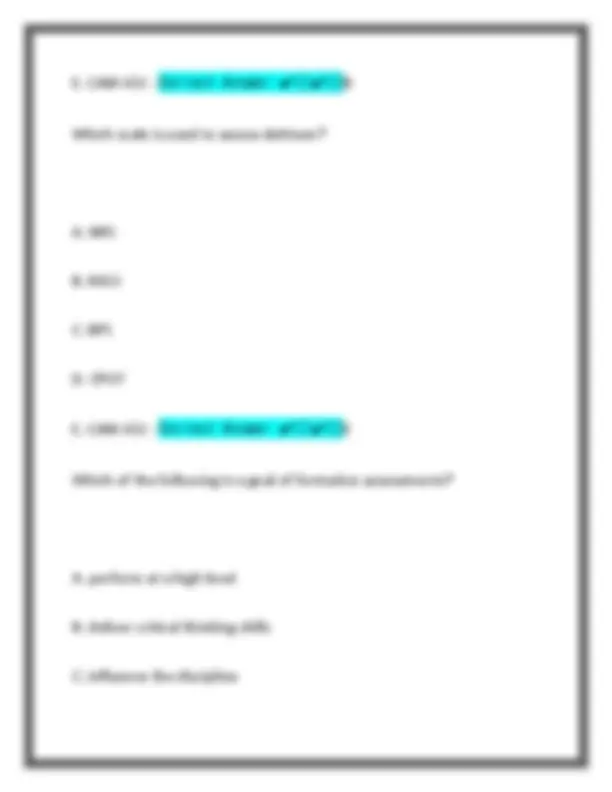
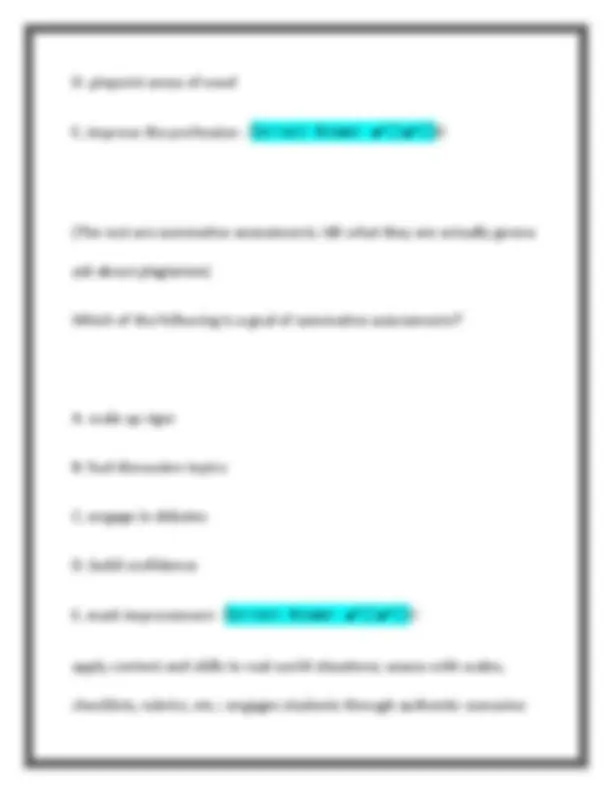
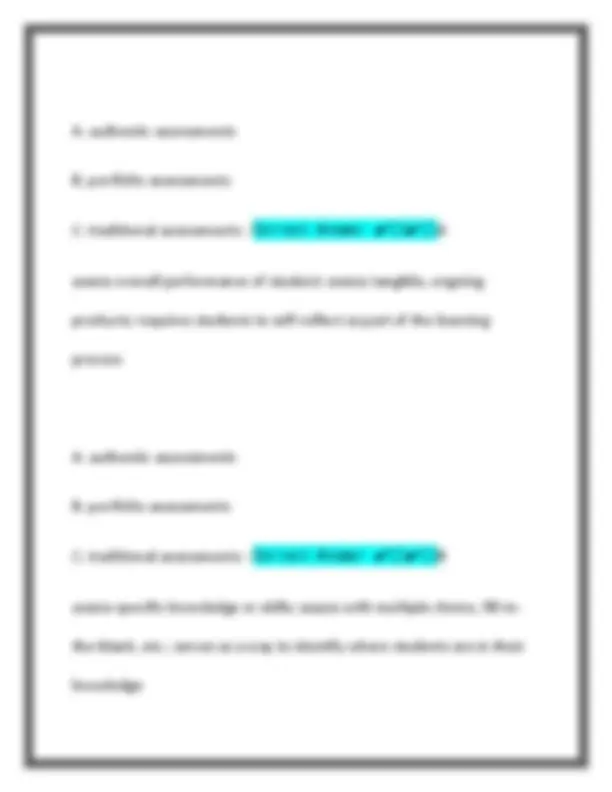
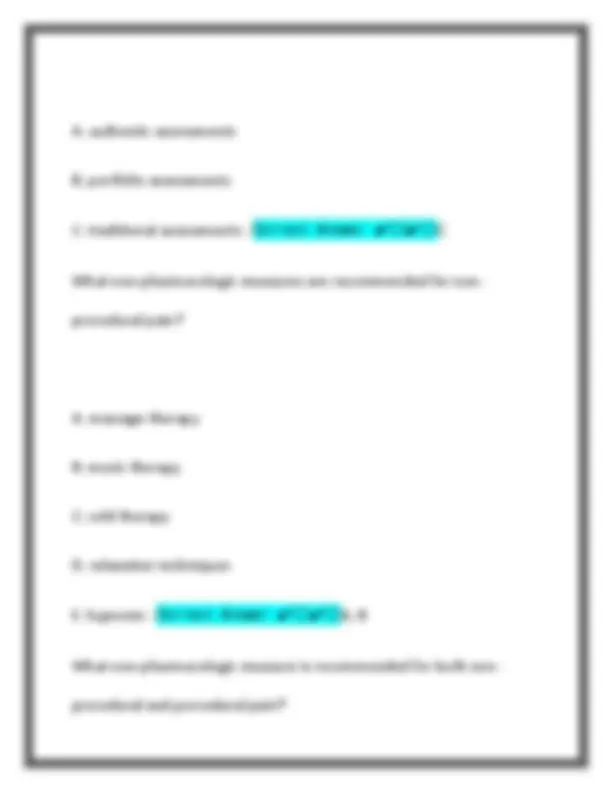
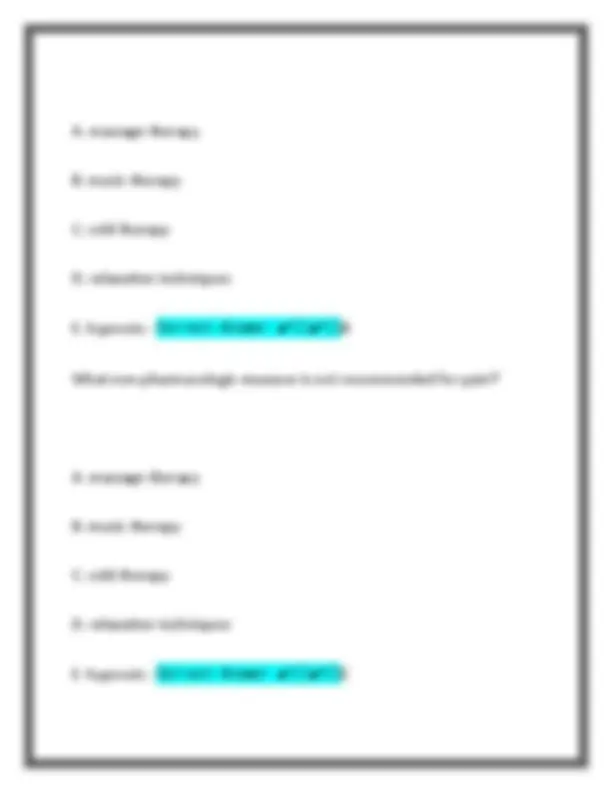


Study with the several resources on Docsity

Earn points by helping other students or get them with a premium plan


Prepare for your exams
Study with the several resources on Docsity

Earn points to download
Earn points by helping other students or get them with a premium plan
Community
Ask the community for help and clear up your study doubts
Discover the best universities in your country according to Docsity users
Free resources
Download our free guides on studying techniques, anxiety management strategies, and thesis advice from Docsity tutors
MCPC II Exam 1 With Comprehensive Questions And Premium Solutions
Typology: Exams
1 / 52

This page cannot be seen from the preview
Don't miss anything!













































A 52-year-old man has a history of asthma, chronic stable angina, and hypertension. He is experiencing ischemic chest pain twice weekly while being treated with bisoprolol 10 mg daily. His BP is 146/90 mm Hg (144/92 mm Hg when repeated), and heart rate is 58 beats/min. Which is the most appropriate to add to this patient's regimen?
A. Lisinopril 20 mg daily
B. Diltiazem SR 180 mg daily
C. Amlodipine 5 mg daily
D. Irbesartan 150 mg daily and hydrochlorothiazide 25 mg daily - Correct Answer ✔️ ✔️ C
(All would lower his BP to goal, but amlodipine is the only that would treat his ischemic chest pain)
A 55-year-old man with hypertension and no other chronic medical problems is currently treated with hydrochlorothiazide 50 mg daily, irbesartan 300 mg daily, carvedilol 25 mg twice daily, and amlodipine 10 mg daily. His BP is 144/96 mm Hg (146/94 mm Hg when repeated). He is adherent to all of these medications and with lifestyle modifications. Serum creatinine is 1.2 mg/dL (106 μmol/L), potassium is 3.7 mEq/L (mmol/L), and all other laboratory values are normal. Which agent is appropriate to add to his regimen?
A. Terazosin 2 mg daily
B. Spironolactone 25 mg daily
C. Clonidine 0.1 mg twice daily
D. Chlorthalidone 25 mg daily - Correct Answer ✔️ ✔️ B
An acute respiratory distress syndrome patient is being paralyzed with cisatracurium and deeply sedated with fentanyl and propofol to facilitate mechanical ventilation with a lung protective strategy. The patient's nurse is interested in discontinuing fentanyl drip because the documented CPOT score = 0. The RASS score is −5. Which of the following is the best therapeutic option?
A. Turn off the fentanyl infusion since there is no evidence for pain
B. Have the nurse monitor vital signs after turning off the fentanyl infusion since these are valid indicators of pain
C. Retain fentanyl since pain cannot be assessed with CPOT in patients without motor activity
D. Ask a surrogate to assess the patient's pain before turning off the fentanyl - Correct Answer ✔️ ✔️ C
Which of the following is the most likely to influence ICU delirium and pain assessments?
A. Sedation during delirium and pain assessments
B. Lack of a validated ICU delirium and pain assessment tools
C. The subjectivity of validated delirium and pain assessment tools
D. Caregiver inexperience in administering these assessments - Correct
Answer ✔️ ✔️ A
A non-intubated patient with respiratory distress in the setting of an acute exacerbation of chronic obstructive pulmonary disease develops agitation that seems related to his dyspnea. Aerosolized bronchodilators help his oxygenation, but even after a 2-mg dose of intravenous midazolam, he remains agitated. His mean arterial blood pressure is 60 mm Hg without vasopressor support. When asked about any discomfort, he rates his pain as 4 on the numeric rating scale.
B. They are made more efficient by focusing on one effort
C. They are generally ineffective, but not likely to cause harm
D. They do not lend themselves to a bundled approach - Correct
Answer ✔️ ✔️ A
An 86-year-old woman with a minimal medical history presents with a urinary tract infection and acutely becomes sleepy, withdrawn, and confused. She does not seem to be able to attend to commands appropriately, though she has no history of cognitive dysfunction. Which of the following is the likely explanation for her behavior? Diagnostic screening tests have not yet been performed.
A. Hypoactive or decreased arousal delirium
B. Posttraumatic stress disorder (PTSD)
C. Dementia
D. Depression with dementia - Correct Answer ✔️ ✔️ A
An 86-year-old woman with a minimal medical history presents with a urinary tract infection and acutely becomes sleepy, withdrawn, and confused. She does not seem to be able to attend to commands appropriately, though she has no history of cognitive dysfunction.
This same patient is determined to have delirium based on a screening assessment tool, the CAM-ICU. The urine grows E. coli susceptible to most antibiotics. What is the best treatment for her psychiatric symptoms?
A. Intravenous haloperidol
B. Enteral quetiapine
C. Enteral amoxacillin
D. Enteral levofloxacin - Correct Answer ✔️ ✔️ C
When compared to infusions of propofol and dexmedetomidine, midazolam infusions are associated with which of the following?
A. A longer duration of mechanical ventilation and higher mortality
B. A longer duration of mechanical ventilation and ICU length of stay
C. An increased risk for delirium without affecting time on the ventilator and in the ICU
D. A reduction in ICU costs since its acquisition costs are less than the other two options - Correct Answer ✔️ ✔️ B
(Midazolam is not associated with increased mortality though)
Ventilatory support of patients with acute respiratory distress syndrome is often prolonged and requires sustained sedation and analgesia for comfort and to facilitate synchrony with the ventilator.
Many of these patients also have concomitant kidney injury. Which of the following combinations is preferred in this setting?
A. Fentanyl and midazolam
B. Fentanyl and propofol
C. Morphine and propofol
D. Hydromorphone and midazolam - Correct Answer ✔️ ✔️ B
(Both fentanyl and propofol are short-acting, not cleared by kidneys, & do not produce active metabolites)
An 80-year-old male who resides in a skilled nursing facility is admitted with septic shock and respiratory failure related to a healthcare- associated pneumonia. His mean arterial blood pressure is 60 mm Hg and vasopressor therapy is initiated. His urine output is diminished and
A 75-year-old male is admitted to the ICU with respiratory distress due to COPD exacerbation. He has a history of atrial fibrillation treated with diltiazem 45 mg q6h for rate control and chronic back pain effectively treated with acetaminophen on an as-needed basis. Within 12 hours, he becomes agitated and is provided a dexmedetomidine infusion, but his heart rate is now 45 beats/min. He is not requiring mechanical ventilation, and the team is interested in an alternative regimen that will provide comfort while preserving his respiratory drive. Which of the following strategies would be preferred?
A. Fentanyl infusion titrated to pain relief
B. Scheduled enteral clonidine with as-needed morphine
C. Scheduled enteral quetiapine with as-needed fentanyl
D. Scheduled enteral acetaminophen with as-needed hydromorphone injection - Correct Answer ✔️ ✔️ D
(Hx includes successful use of APAP, but need PRN hydromorphone. No data for quetiapine and agitation)
A 35-year-old female suffers extensive thoracic trauma after a motor vehicle crash. Surgical intervention was successful, but she now has an ileus likely due to postoperative use of continuous infusion fentanyl and this interferes with achieving her nutritional goals. Which of the following is NOT a good option for relief of moderate-to-severe pain in this patient?
A. Add ketamine infusion with scheduled acetaminophen
B. Continue fentanyl infusion with aggressive scheduled bowel preparations and add acetaminophen
C. Transition to methadone for pain relief
ischemic stroke (6 months ago), with a BP of 186/108 mm Hg (184/ mm Hg when repeated)?
A. A thiazide with an ACEi
B. A thiazide with a nonselective β-blocker
C. A thiazide alone
D. An ACEi with an ARB - Correct Answer ✔️ ✔️ A
(Hx of ischemic stroke is compelling indication for thiazide monotx or thiazide + ACEi)
Which of the following psychoactive medications is NOT associated with withdrawal symptoms with abrupt discontinuance after prolonged high-dose exposure?
A. Quetiapine
B. Clonidine
C. Midazolam
D. Fentanyl - Correct Answer ✔️ ✔️ A
Which of the following conditions can result in a lowering of blood pressure in critically ill patients?
A. Increased cardiac output
B. Decreased cardiac preload
C. Systemic vasodilation
D. Both B and C - Correct Answer ✔️ ✔️ D
Which of the following statements about central venous oxygen saturation is incorrect?
Which of the following hemodynamic profiles is typically observed in a patient with obstructive shock?
A. Low preload, low cardiac output, low afterload
B. Low preload, low cardiac output, high afterload
C. High preload, low cardiac output, low afterload
D. High preload, low cardiac output, high afterload - Correct Answer
✔️ ✔️ D
Based on efficacy and cost considerations, which of the following is the initial fluid of choice for the initial resuscitation of a patient with hypovolemic shock?
A. Lactated Ringer's solution
B. Dextrose 5%
C. Albumin 5%
D. Albumin 25% - Correct Answer ✔️ ✔️ A
If given in large but equivalent volumes, which of the following fluids is most likely to yield hyponatremia?
A. 0.9% sodium chloride
B. Lactated Ringer's solution
C. Albumin 5%
D. Albumin 25% - Correct Answer ✔️ ✔️ B
Which of the following drugs predominantly stimulates alpha adrenergic receptors with minimal effects on beta adrenergic receptors?
A. Dopamine